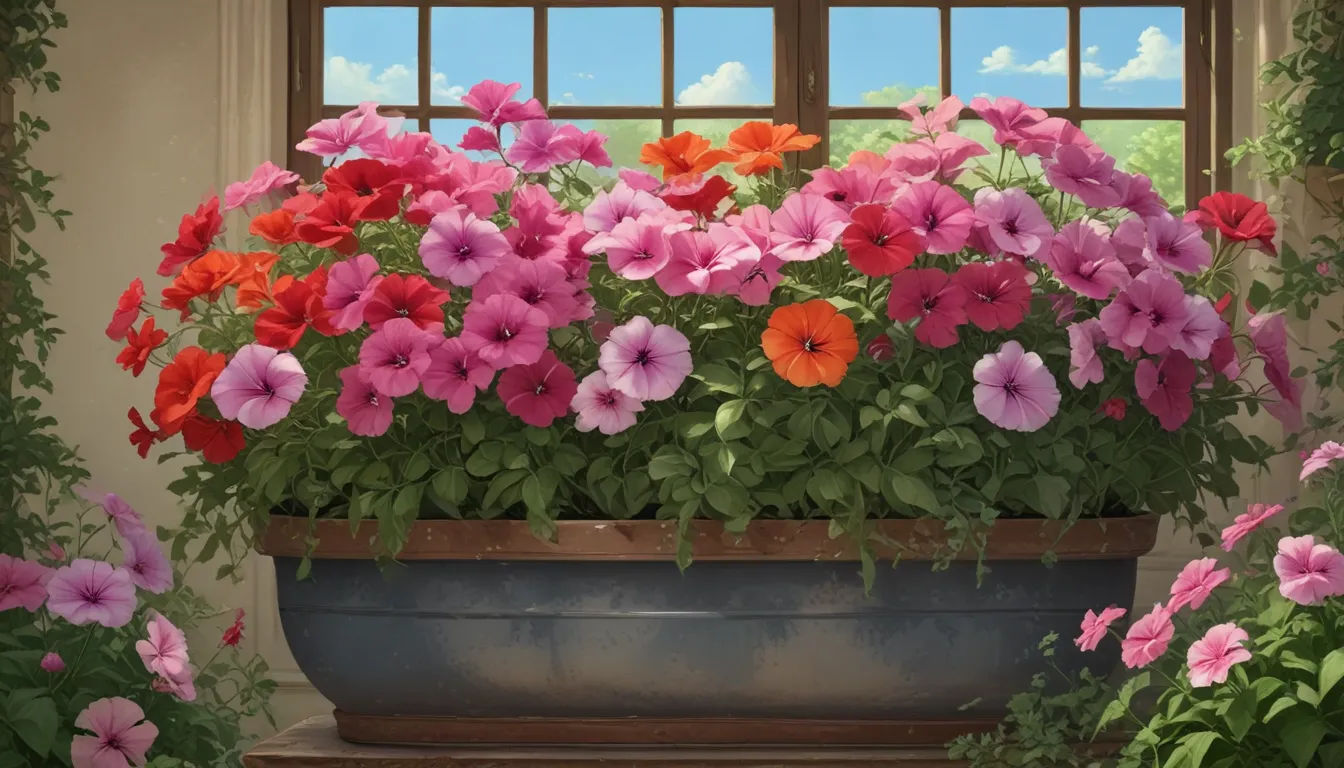A Comprehensive Guide to Growing Petunias in Containers

Are you looking to add a pop of color to your outdoor space with beautiful petunias in containers? These vibrant and easy-to-care-for annual flowers are the perfect choice for planting in pots, planters, hanging baskets, and window boxes. In this in-depth guide, we will explore everything you need to know to successfully grow petunias in containers, from choosing the right types to pruning and fertilizer tips.
Why Choose Petunias for Containers
Petunias are a popular choice for container gardening due to their stunning trumpet-shaped flowers that come in a wide range of vibrant colors. These ornamental flowers bloom continuously from early summer until frost, providing a nonstop parade of color in your outdoor space. Whether you prefer solid tones, bicolors, freckles, or stripes, petunias offer a variety of options to suit your style.
In addition to their visual appeal, petunias are also attractive to pollinators such as bees, butterflies, and hummingbirds, making them a valuable addition to any garden. With their easy care requirements and versatility in containers of all shapes and sizes, petunias are an excellent choice for both beginner and experienced gardeners.
Container Selection and Planting Tips
When growing petunias in containers, it is essential to choose pots or planters with drainage holes to prevent waterlogging. Use a well-draining, fertile soil with a slightly acidic to neutral pH of 6.0 to 7.0 for optimal growth. To enhance soil moisture retention, mix in moisture-retentive materials such as coconut coir, peat moss, perlite, or vermiculite.
Enrich the soil with organic matter like compost or aged manure to provide essential nutrients for the plants. Additionally, adding grit such as landscape sand, pea gravel, perlite, or stone chips will ensure good drainage and prevent soil compaction. Set the bedding plants in place with the crown just below the soil surface and slightly closer together than in-ground planting recommendations.
For moss-lined hanging baskets, add a layer of perforated heavy plastic over the moss before filling with soil to retain water without causing sogginess. Water the containers regularly, ensuring that the top inch of soil dries out between water applications. Avoid overhead watering to prevent the spread of diseases like powdery mildew.
The Best Petunia Types for Containers
Petunias come in various types with unique characteristics that are suitable for container gardening. Some popular types include:
-
Grandiflora: These hybrids feature large, single or double flowers up to four inches across, making them ideal for garden beds, planters, and window boxes.
-
Multiflora: Compact in size with smaller flowers, multiflora petunias are fast-growing and perfect for mass planting in borders and large planters.
-
Milliflora: Dwarf plants with masses of small flowers, millifloras are self-cleaning and excellent for spilling out of containers and planters.
-
Spreading: Bred for a trailing habit, spreading varieties like Cascadias™ and Surfinia® are lush ground covers that can also trail out of hanging baskets and window boxes.
Choose the type of petunias that best suit your container gardening needs and aesthetic preferences.
Do Petunias Need Deadheading?
Deadheading requirements for petunias vary depending on the type of plant you are growing. While old-time varieties like grandifloras benefit from deadheading to prevent seeding, newer types such as Supertunia® cultivars are self-cleaning and do not require deadheading. Check the specific care instructions for your petunia variety to determine if deadheading is necessary.
If your plants do require deadheading, be sure to remove faded blooms regularly by pinching them out with your fingers or using clean, sharp garden shears. Always cut the stems cleanly to avoid damaging the plant.
When and How to Fertilize
Petunias are heavy feeders and require regular fertilization to maintain healthy growth and abundant flowering. At planting time, mix compost or aged manure into the soil to provide essential nutrients. After planting, use an all-purpose liquid fertilizer or slow-release pellets with a balanced formula like 10-10-10 NPK to feed the plants.
Apply liquid fertilizers every two weeks at half strength to prevent leggy growth. For slow-release pellets, scatter them over the soil surface right after planting and reapply in early summer for optimal nutrient uptake.
Prune for Full Plants
Although petunias are low-maintenance plants, a bit of selective pruning can help promote new growth and maintain a tidy appearance. Prune lightly by cutting back leggy stems by up to one-third, reshaping the plants for a fuller form. Pruning should be done in late spring or around the start of July to encourage vigorous growth with more flowers.
Reshape the plants again in mid-August if needed, but avoid pruning beyond mid-September as it may not produce significant new growth.
Sun Exposure and Watering Needs
Place your potted petunias in a full sun location with at least six hours of sunlight per day to ensure optimal flowering. While petunias can tolerate light shade, they will bloom best in direct sunlight. Water the containers regularly, providing up to two inches of water per week to prevent drying out in hot, sunny conditions.
Water deeply to promote deep root growth but avoid overwatering to prevent waterlogging. Allow the top inch of soil to dry out between watering applications and empty catchment trays if the soil becomes wet. Remember to water frequently in hot weather, as containers dry out quickly.
Pests and Problems
While most petunia varieties are bred for good disease resistance, pests and diseases can still affect potted plants. Common issues such as aphids, deer, and powdery mildew may arise, requiring proper management strategies. Check our guides on common petunia pests and how to grow and care for petunias for more information on handling these problems.
By following these tips and guidelines, you can grow beautiful petunias in containers and enjoy a stunning display of colorful flowers throughout the summer season. Whether you choose grandifloras, multifloras, millifloras, or spreading varieties, petunias are a versatile and easy-care option for your container garden.
What type of petunias do you grow in containers? Share your experiences in the comments below!





